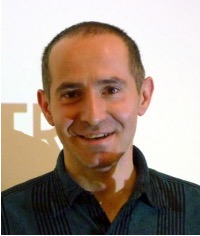Towards
Efficient Niobium Oxide Thermoelectrics
Denis
Music*
Department
of Materials Science and Applied Mathematics, Malmö University, 20506 Malmö,
Sweden
ABSTRACT: Research fields are commonly congregated around key
physical and chemical properties, but often correlative approaches are lacking.
An example can be found in the field of thermoelectrics. Transport properties
are central, but many other features, such as mechanical properties (e.g.
thermal fatigue during multiple heating/cooling cycles), could be detrimental
in applications. Using synergy between density functional theory and
experiments (see Figure 1) two Nb based oxides are explored: (i) monoxide and
(ii) dioxide. First, the growth aspects are tackled. Nb, NbO, NbO2,
NbO3, O, O2, and O3 film forming-species occur
in an Nb-O2-Ar sputtering plasma. H2O, O2, and
O3 dissociate, while Nb-O clusters and OH undergo non-dissociative
adsorption and H2 is repelled. NbO grows in a defect-free fashion,
while this is not the case for NbO2 under kinetically limited growth
conditions. Thermoelectric NbON is designed by filling the vacant sites in NbO
with N, thereby increasing fivefold its Seebeck coefficient. Based on the
elastic response, NbON can be perceived as ductile. A multilayer design will
also be discussed, including its unusual thermal conductivity. Furthermore,
alloying of NbO2 with all 3d and 5d transition metals leads to Ta
additions fulfilling the key design criteria, namely enhancement of the Seebeck
coefficient and positive Cauchy pressure (ductility gauge). Thus, the maximum
power factor is 2813 μW m-1K-2 for the Ta/Nb ratio of
0.25, which is a hundredfold increment compared to pure NbO2 and
exceeds many oxide thermoelectrics. These NbO2 based configurations
can be perceived as metallic, exhibiting low electrical resistivity and ductile
behavior. Only by applying holistic approach, where correlative treatment of
many properties and phenomena occurring at different scales ranging from
nanoscale to continuum, it is possible to design novel materials for specific applications.

Figure 1. Synergy between theory
and experiment to explore Nb oxide thermoelectrics
Keywords:oxide thermoelectrics; density functional theory; thin films

Denis Music completed his PhD at Linköping University, Sweden, in 2003 and then he moved to RWTH Aachen University, Germany. He has been a professor at Malmö University, Sweden, since 2020. He has published more than 200 papers in reputed journals and has been serving as an editorial board member.